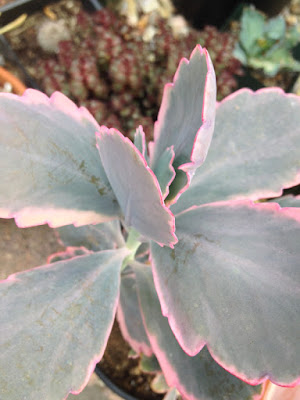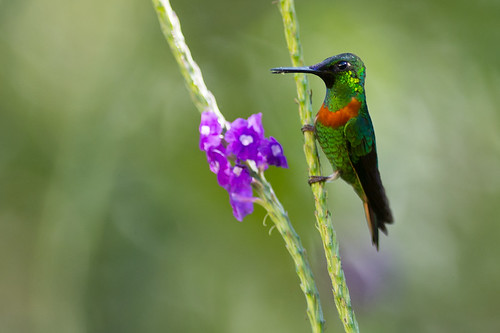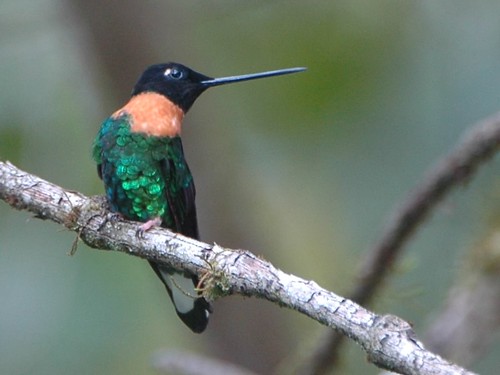Here are photos of some of the more or less permanent fixtures in my yard these days, plant-wise, along with a few new additions. Warning:
lots of photos.
Aloe africana. The tree in the ground behind it is a walnut: a native walnut tree in a two foot wide strip next to the house. To be fair to previous occupants, a bird probably planted it. The arborist offered to put it (where else?) in a pot for me.
A tiny Mangave 'Bloodspot.'
And not far away, a smallish Agave bovicornuta.
Bunper crop! The Meyer lemon was a neglected shrub when I moved in, but it's much happier now, and will be even happier after the arborist removes dead wood and tidies everything up. ("You have a Meyer lemon!" said the arborist. "Oh, no," I said to the arborist. "It's just an ordinary lemon." [dies of shame]
It's a Meyer lemon.
[Although I grew up surrounded by citrus groves, and love them, citrus fruit seems to trigger arthritis flare-ups, and I've avoided citrus most of my life. Need some lemons?])
Gone suburban. This Thanksgiving Cactus is in a hanging basket next to the lemon tree.
Morning light is wonderful through the leaves of Grevillea 'Long John' — I'm just afraid this plant would be happier in the ground. Probably needs more sun. And I'm afraid to prune it, which is ridiculous, since in general I'm a lop-branches-off-with-abandon kind of person. We'll see how it does this winter.
Agave montana. It survived last winter's snow with no protection, but I'm bringing it under cover this year.
In the pot ghetto (oh, who am I kidding — my entire garden is a pot ghetto): a new, NOID agave from Jurupa. 'Baccarat'...?
Finally potted: Agave victoriae-reginae 'Golden Princess,' from Tony Marino of the Gates club.
The beautiful foliage of Eucalyptus 'Moon Lagoon.'
Opuntia basilaris, the king of the glochids. Seriously, this cactus sits back and sneers at puny humans through a cloud of dispersing glochids. Great flowers!
Vision of a dream come true at Louie's Nursery. I want an entire wall of big opuntias. Working on it.
Also at Louie's, a perfect Agave guiengola 'Crème Brûlée.' As Gerhard has written, guiengolas bruise if you look hard at them. This one is well-protected and gets just the right amount of sun — mine (below) gets too little. Must get an arbor...
My 'Crème Brûlée.' I love these guys, and as luck would have it, they're big puppers: see below.
One of three pups on this plant.
Opuntia nursery. The school district groundskeepers tore out a big variegated opuntia that was thriving (seven feet high) behind a friend's classroom at work. I managed to salvage a few pieces, and have four or five pots with little variegated opuntias now. It looks like Joseph's Coat (Opuntia monacantha var. variegata).
My gnarliest-spined titanota has a pup!
Please grow up to look like your mom.
Orostachys iwarenge. Such a cool little plant! Found this one at Hunter's Nursery up at Big Bear Lake last summer, and as directed put in it a wide, WIDE pot so that it would have room to sow seed and be bigger next year.
Dies after flowering (Noooo...!!), but comes back from seed each year. (All right then.)
Yucca gigantea. This plant was on a neighbor's porch in Big Bear, of all places, looking dead as a doornail, and I got it when they sold their cabin. Took months for it to show signs of life, but it's thriving now. No intention of ever putting this thing in the ground.
Nearby, some Aloe arborescens going nuts.
And in front of the aloes, a California fuschia, also from Hunter's Nursery in Big Bear. The galvanized bucket was a salvage find, and my welder put a nice hole in the bottom. Now, what plant to put in it?
That flower reminds me: I finally got a hemidemisemi-decent snap of the first Aloe elgonica bloom.
Baby elgonicas.
One of several good-sized elgonica pups I separated from the mothership. Original big plant came from fave Gloria's Nursery in Riverside.
The leaves on Kalanchoe fedtschenkoi 'Variegata' are bordered with the loveliest hot-pink ever — the camera refuses to catch it [/no photo skills].
A new titanota from fellow Gates club member Rob Roy MacGregor.
And another titanota [note to self: do a post on your titanotas], this one a Kelly Griffin variety called 'Stacked.'
A million pups on this Aloe suprafoliata...
...
and none on this one [a rescue plant from a Gates salvage operation]. A meaningful difference, suggests palmbob [last comment]. I love to see this oldster blooming.
How cool to be small enough to build a little web in this well-armed Aloe marlothii? Which, by the way, is as green in real life as his relative below, just washed out in this early morning photo.
Nooooo...!! Disaster strikes. This is not my big Kissho Kan (thank the powers), but a nice medium-sized one. For the heck of it I did minor surgery, removed the rotted leaf, sprayed with straight (rubbing) alcohol. Damage seems localized. No symptoms of mites, as far as I can tell. If it can't be saved, there are many pups, including one that is very light-colored.
More disaster: mealy bugs attacked my oldest agave, a twenty year old A. parryi var. huachucensis. Those are dead mealies — I alcoholized 'em. When the leaf opens a bit more I'll clean things up with a toothpick. Poor parryi!
All this disaster is too much. I need to see a pug.
Lily to the rescue! Here's my sister's pug, Lily, watching the nightly news up at the cabin. Whew! Everything is better now.
If you've made it this far, thanks for looking! Have a good week and a great weekend, whether you're in Santa Ynez, or at
that other plant sale (hint: it's in San Marino), or racing me to the opuntias at UC Riverside.
Bookend: a slightly later-in-the-day, slightly better shot of Agave 'Little Shark,' with its beautiful dark spines and leaf margins. I love this one.


















































